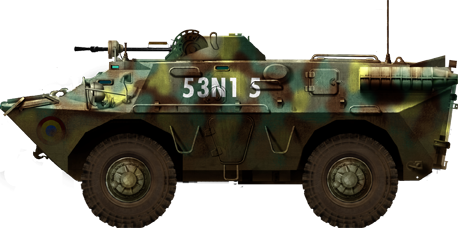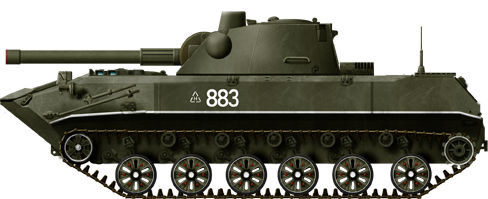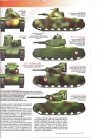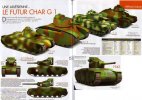So you mean plastic models or digital 3D models?Does anyone know of open-source solid models of the French planned-for-WWII G1 tank (Renault version), B1 ter tank, S40 tank, ACG2 tank, AM40P armored car and 39L APC?
I'm interested in exploring the next generations.
You are using an out of date browser. It may not display this or other websites correctly.
You should upgrade or use an alternative browser.
You should upgrade or use an alternative browser.
Alternative History Armoured Fighting Vehicles Part 3
- Thread starter Claymore
- Start date
- Status
- Not open for further replies.
Will these do?
So you mean plastic models or digital 3D models?
I'm aware of GBM's articles, and much other OTL-historical info. Also various 2D drawings. What I'm hoping to find are (open source) 3D solid models. (digital 3D models).
Last edited:
This is probably a common question but is there anywhere you can see Claymore’s brilliant models without going through nearly 1500 pages of info?
BlackDragon98
Banned
Best I get you is this.I'm aware of GBM's articles, and much other OTL-historical info. Also various 2D drawings. What I'm hoping to find are (open source) 3D solid models. (digital 3D models).

43 Tanks Base Mesh
Tank base meshes.Military models. Collection of 43 tanks from different time periods.

Neither are free unfortunately.
Top link has a couple frogs.
I think GBM uses 3D models but I have no idea who made them for the articles.I'm aware of GBM's articles, and much other OTL-historical info. Also various 2D drawings. What I'm hoping to find are (open source) 3D solid models. (digital 3D models).
I have a friend who is doing a 3D model of AMX-38 (1st prototype) on Fusion 360 using the blueprints on Mémoire des Hommes.
Unrelated but I have found a recent archive database (Ike Skelton's Combined Arms Research Library) which has a bunch of 1945-1949 reviews from Army Ground/Field Forces and the War Department. They are the docs which draw the famous requirements for early postwar US tanks and other vehicles.
Few pictures but it's nice to understand the requirements. I will post the 1946 APC pics when I can though. The biggest discovery was finding that the requirements changed very little between 1946 and 1949. What AGF wanted could have been pretty crazy if they got the money.
And last but not least, I will finally try to go to the French military archives at Vincennes later this month, looking for AMX-30 material.
Sorry I missed your post and thank you for your compliment, as @GuildedAgeNostalgia said, see the link below to my completed models thread - created for those with the same issue! 😉This is probably a common question but is there anywhere you can see Claymore’s brilliant models without going through nearly 1500 pages of info?
Will see what I can rustle up! 👍If possible (it's perfectly okay if not), could someone do a line drawing where a turret from the Soviet 2s9 Nona SPG is put onto the hull of the Romanian TAB-79 (Also known as ABC-79M)?
I think the turret should fit (the TAB-79 is wider than the Nona) but the pictures below make it look like it can't (probably not to scale although the pictures come from the same website).


Beating swords into candysharers?As an aside saw a thing on Facebook Halloween night where some Army base drover an MRLS to a park and used it to shoot candy to the kids
(Opened up the reloading doors and stuck a piece of PVC pipe into the tubes and fired the candy with air pressure)
Neat alternate use
Randy
If possible (it's perfectly okay if not), could someone do a line drawing where a turret from the Soviet 2s9 Nona SPG is put onto the hull of the Romanian TAB-79 (Also known as ABC-79M)?
I think the turret should fit (the TAB-79 is wider than the Nona) but the pictures below make it look like it can't (probably not to scale although the pictures come from the same website).


Will see what I can rustle up! 👍
Unfortunately, we have a problem Houston!
The 2S9 Nona turret is just too big for the diminutive TAB-79. It overhangs the sided just a bit but as we can see in the same turret fitted to the 2S23 in the picture below that is a relatively easy fix.
The real problem is with the turret length on the cut-down TAB-79 as it interferes/covers the engine louvres at the rear and the crew access hatches at the front. The longer hull of the 2S23 doesn't have this problem...
Thank you for the attempt though 🙂Unfortunately, we have a problem Houston!
The 2S9 Nona turret is just too big for the diminutive TAB-79. It overhangs the sided just a bit but as we can see in the same turret fitted to the 2S23 in the picture below that is a relatively easy fix.
View attachment 866768
The real problem is with the turret length on the cut-down TAB-79 as it interferes/covers the engine louvres at the rear and the crew access hatches at the front. The longer hull of the 2S23 doesn't have this problem...
View attachment 866769
This is inspired by a story of a country who was Isekai'd or ASB out of Earth and into a world in the post-WW1/Inter-War timeline thus they while having the modern weapons and industry to create the Small Arms, Small Artillery, APCs, Armored Cars and Combat equipment like webbing, helmets and bullet proof vests, they had to quickly jump start their tank production mostly on the fact that they never had to make a Tank and IFV very quickly....
Thus using already known designs in their arsenal and historical vehicles, from the combine might of the Military Logistics and Maintenance and the Ordnance-Engineering-Automotive-Industry, they have created a tank so familiar in history some called it a copy. Using the French made 75 SA 50 75 mm high-velocity rifled gun and Belgian made Cockerill Mk3 M-A1 90mm gun and Cockerill 105 mm high-pressure rifled gun for their main armament, it was the most heavily armed and armored tank for it's time.
They called it the Medium Weight, Main Battle Tank, or it's commonly referred by it's nickname the Rhino series, the later hull, track and suspension design will be used on the new locally made and built Self-Propelled Guns, rudimentary SPAAGs mostly for export, and the reversed engineered Command vehicles, Ambulances and APCs from old British CVRT vehicles still in stock.

Thus using already known designs in their arsenal and historical vehicles, from the combine might of the Military Logistics and Maintenance and the Ordnance-Engineering-Automotive-Industry, they have created a tank so familiar in history some called it a copy. Using the French made 75 SA 50 75 mm high-velocity rifled gun and Belgian made Cockerill Mk3 M-A1 90mm gun and Cockerill 105 mm high-pressure rifled gun for their main armament, it was the most heavily armed and armored tank for it's time.
They called it the Medium Weight, Main Battle Tank, or it's commonly referred by it's nickname the Rhino series, the later hull, track and suspension design will be used on the new locally made and built Self-Propelled Guns, rudimentary SPAAGs mostly for export, and the reversed engineered Command vehicles, Ambulances and APCs from old British CVRT vehicles still in stock.



There we go, 1946. 500hp engine, 12.7mm of armor against .30 cal bullets, one hull .30 cal, pintle .50 cal and provisions for flame throwers and such.

And in 1949, a plan to further develop the T40 (M46 prototype). The autoloaded T54 is also known as the T76 gun, from which the more powerful T76 (mod) seen in Hunnicutt was developped.
1946 plans called for new tank destroyers similar to Hellcat, but with more powerful armament at 25 and 32 tons.
From what I've read in the past, the E100 (and the Maus) were supposed to be a sort "tip of the spear" of a formation that would involve just 1-3 Maus/E100, with the flanks covered by the new E50/Panther II family.I realize this form is mostly focused on the models. I have often wondered what kind of armored formations the Germans would have created to operate the larger E series tanks for example.
I hope all attendees were wearing PT belts for safety.As an aside saw a thing on Facebook Halloween night where some Army base drover an MRLS to a park and used it to shoot candy to the kids
(Opened up the reloading doors and stuck a piece of PVC pipe into the tubes and fired the candy with air pressure)
Neat alternate use
Randy
I also saw the video & thought it was pretty cool.
Romfell V2.0 Armoured Car Update: (@Petike)
The finished product with some details from Petike's TL:
The Stallion model depicts vehicle number III of the Heavy AT Company of the Zemplín Federation's Armoured Car Battalion whilst the Mare represents vehicle number III of the battalion's Headquarters Company. The model is adapted from a couple of excellent CSM Romfell Panzerwagen models and the ubiquitous plastic card. The figure’s (Officer and JNCO) are also from CSM.
Stallion



Mare



The finished product with some details from Petike's TL:
The Zemplín Federation's military (1918 - mid-to-late 1940s):
Armoured cars: Since the ATL version of the Austro-Hungarian Romfell armoured car had been produced in plentiful numbers (approaching 120 units), the governments of the Šariš Free State, Zemplín Federation and Kingdom of Galizia commandeered as many leftover units as possible after the collapse of the eastern front late in WWI.
Modifications and add-ons: The governments soon realized that the vanilla version of the vehicle wouldn't be all that suitable for the needs of their interwar militaries. Furthermore, while a good basic design, the model had several inherent flaws that were in dire need of being addressed by technical tweaking and updating. Maintaining and reproducing some of the more intricate parts and portions of the vehicles would prove too pricy, especially for the strapped-for-cash Šariš and Zemplín militaries. Hence why all of the three countries decided to resort to extensive modifications of all surviving Romfell hulls.
Upgrades of the Romfell common in all three states included:
- Replacement of the original engines for more powerful ones.
- The hull plating was, where possible, slightly thickened.
- The once overly narrow wheels were replaced with far broader, thicker, buffer ones.
- The roof of the turret, originally equipped with a simple and rather unergonomic hatch, was replaced by a static roof that could be raised and lowered by a handcrank-operated mechanism from inside the turret.
- Several variants of the car were created in each country. Every variant was distinctive either by its extended number of wheels, modified hull or by new armaments.
Resulting variants: The three Romfell that were in use among the armoured units of the ZF's armed forces since the 1920s, up until the 1940s were the following:
1. Hače ("Foal") armoured scout car - This variant is the closest to the original Romfell. It is a simple armoured scout car with a single machine gun and a crew consisting of only a driver and gunner. The hind parts of the vehicle were slightly enlarged to allow for a smaller, inexpensive on-board radio. (Claymore's note: Not reproduced as a model)
2. Hačur ("Stallion") anti-tank armoured car - The most ambitious and creative of the variants, but also the one that was produced the least. It was derived from an experimental prototype, a six-wheeled expansion of the original Romfell. Since the Romfell - vanilla as well as modified - is overall a fairly light armoured car and has a rather small turret, the ZF armed forces made a decision to equip it with heavy anti-tank rifles instead of actual light cannons. While the caliber of these improvised "rifle-cannons" is rather low and they can't pack as much of a punch as a real cannon, they are still adequate for supporting infantry and armoured cars with machine guns against more lightly armoured vehicles (e.g. tankettes, light tanks). The space offered by the expanded hind quarters of the variant are used primarily for housing the on-board radio, a small storage of additional ammo for the AT rifle and the bench of the ammo loader (who also doubles as a radio operator when he's not handing AT bullets to the gunner). The ammo can be loaded into the car through a small single door in the back. This door is also used as an emergency escape hatch for the gunner, in case he doesn't make it to the front doors of the car.
3. Kobula ("Mare") light APC / assault armoured car - This variant came into being as a simpler offshoot of the Stallion six-wheeler. There are only two real differences between the duo: The turret sports a machine gun instead of an anti-tank rifle. Instead of a small storage for AT rifle ammo, the reinforced hind quarters of the car have small benches, able to accommodate up to 4 infantrymen. Said infantrymen can enter through two doors at the back of the car. The relative spaciousness of the hind quarters also permits the car to carry a bigger and more powerful on-board radio. This means that the car can also be used as an improvised command vehicle, with one or two of the soldiers replaced by a platoon commander and his aide, both sitting near the radio.
Reasons behind the turret hatch modification: I'll just note that there is no longer a top hatch on the turret. The entire roof is a solid single piece but can be lifted a bit on small rack rails inside the turret, powered by a hand crank. The main reason why they redesigned the original roof was to avoid someone sneaking up on the car, climbing on the turret, opening the hatch and chucking in a hand grenade. The crew of the modified car is in about the same amount of potential danger as the tankette and light tank crews, so having a top hatch wouldn't add much to the survivability. Of course, losing a top hatch makes an escape a bit more involved, but the modified car was never meant to fight tanks head on.
Tactical use of the modified Romfell: The Romfell is not intended to directly battle armour larger than light tanks, and certainly not against whole groups of enemy armour. With the improved wheels and more powerful engine, the car is intended for hit-and-run tactics, rather than direct confrontations with a larger armoured force or infantry force. Most of the preferred tactics focus on ambushes, especially in rural areas with dirt roads among fields, meadows and the edges of forests. Hiding behind foliage or hedgerows is part of commencing ambushes. The cars coordinate with jaegers and with other light armoured vehicles (sometimes even with mounted troops) to harass the enemy in ambush-advantageous locations. The AT variant (and AT rifle infantry) attempt to harass enemy light armoured vehicles and motor vehicles, while the MG variants (and machine gunners and riflemen) try to attack enemy infantry and mounted troops. The goal isn't an orderly thinning-down of the ranks, but an effort to cause as much confusion, chaos and panic in the invaders as possible, possibly even induce a rout.
The Stallion model depicts vehicle number III of the Heavy AT Company of the Zemplín Federation's Armoured Car Battalion whilst the Mare represents vehicle number III of the battalion's Headquarters Company. The model is adapted from a couple of excellent CSM Romfell Panzerwagen models and the ubiquitous plastic card. The figure’s (Officer and JNCO) are also from CSM.
Stallion
Mare
Last edited:
- Status
- Not open for further replies.
Share:


